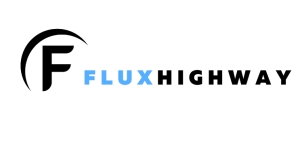Flux bridges the gap between Web2 and Web3, relying on a deep technology development model, a robust ecosystem, and a commitment to the next-generation internet. Its decentralized networks remove the gatekeeper’s hegemony around data, information and, even, infrastructure needed for Web3 scaling. More than innovative, it is also usable, affordable, and flexible enough for the mainstream.
Accessibility is regarded as the ability of a blockchain network to be interacted with or be used by different people over time with little or no complication. From this perspective, the more complicated it is for users to interact with a network’s ecosystems and protocols, the lesser its accessibility.
It goes without saying that blockchain and the Web 3.0 internet have grown both in awareness and the number of projects. However, confusion, assumption, and misinformation have continued to trail its suitability for mass adoption. For example, even though blockchain technology can bring more security, transparency, and simplicity to businesses, many owners are still confused about whether the adoption of blockchain or Web3 solutions is the right choice for their business.
Many of these fears emanate from the controversies that surrounded (and continue to surround) the rise and use of cryptocurrencies. This ranges from its apparent volatility and skepticism by governments and central banks down to lack of existing regulations. Therefore in building applications for the Web3 internet and using blockchain technology, accessibility ease of use and adoption by developers and end-users alike, is of essential need.
Blockchain networks align with the web 3.0 vision of decentralization and a user-centric approach. They also offer the potential for different use-cases cutting across finance, education, business, energy, and healthcare. Decentralized networks will remove the gatekeeper’s hegemony around data, information, and even infrastructure needed to power the Web3 internet. Peer-to-peer sharing networks will be able to leverage the security of the blockchain protocols, while cross-device connectivity and digital identity synchronization will thrive. However, it’s is not enough for a solution to be innovative; it must also be usable, affordable, and flexible for the mainstream.

Accessibility as a Tool for Mass Adoption.
Perhaps one of the challenges to the mass adoption of a blockchain-powered ecosystem is the perceived complexities of smart contracts, user experience, and how the semantic Web3 will work. While technologies built on the web2 internet have their limitations (which necessitated the need for another iteration of the web in the first place), one of their core strengths was user-friendliness. Social media applications were easily navigated, businesses and organizations could outsource the management of their infrastructure and not need to be directly involved in its backend operations, and users could quickly sign up to websites by using Google or Facebook login options–all in a matter of a few clicks.
Due to the relative newness of blockchain technology and Web3 concepts, many features are either limited to individual blockchain networks or grossly underutilized due to being understood by a smaller percentage of users. This under usage was why in 2021, Zelcash repositioned itself as Flux, with the vision of becoming the face of a Web3-based economy.
Flux gave a chance to average users to interact with its technology by using their own hardware to provide computation power to the network. Users, regardless of location, could use their infrastructure, host nodes, participate in staking and mining processes, and be rewarded as long as their hardware meets the stipulated requirements.

The Flux ecosystem strips away the complexities that are associated with the onboarding process of many blockchain networks. The ecosystem wallet Zelcore allows users to carry out signed transactions with low fees and high efficiency. It is also integrated with extremely different exchanges in-app that allow interaction without leaving the wallet. As an upgrade to the conventional mnemonic phrase-based system in which the wallet has to rely on the mnemonic to generate the user’s private keys initially, Zelcore allows you to use a username and a password. This eliminates the need for long obfuscated phrases and the risk of losing them. This user password combination allows for simple, yet very secure access and is as strong as standard mnemonic applications.
In addition, the wallet leverages a decentralized 2-factor authentication system to ramp up security and privacy further. Immediately after you exit the app, all digital footprints and password information is completely wiped off, erasing the possibility of your wallet becoming compromised.
The Flux ecosystem bridges the accessibility gap many users have with using blockchain applications such as wallets, Zelcore does this with a slick user experiance ensuring users require little or no technical expertise to find their way around. In addition, Flux also maintains a vibrant community where educational resources are made available and solutions proffered to any challenge users might encounter in interacting with the ecosystem.
Resolving Technical Drawbacks to Accessibility.
Another significant accessibility challenge limiting the mass adoption of blockchain technology and decentralized networks are the technicalities. Creating a blockchain-powered Web3 ecosystem requires deploying more decentralized applications (DApps). The easier it is for developers from a web2 internet to quickly adapt and pick up the required languages or tools, the faster new applications can be built. If the programming concepts behind a blockchain network are too complicated, it will deter new developers from building, but it will also affect the robustness of applications that can be developed. In turn, this will limit use-cases and proffer no significant advantage over using legacy enterprises.
Bridging this technical accessibility gap, Flux software runs on the MEVN (MongoDB, Express, Vue.js, Node.js) stack. Javascript is prevalent programming among developers. Therefore, creating asset layers, side chains, and third-party applications and maintaining them on the network is faster and easier for developers. Flux follows the same principle when it comes to deployment. Developers can deploy their applications using the familiar container type-methods, e.g., Docker, Kubernetes, etc. They can also do this with lower overhead costs and faster iteration.
Flux XDAO replaces the traditional management hierarchies and instead turns governance to the network users. Voting sessions are conducted to determine the future of the network. Finally, Flux provides economic incentives for users to run nodes and supply computational power to the network. Coupled with lower transaction fees, affordable cloud infrastructure, and a user-friendly interface, Flux seeks to build a blockchain-powered Web3 ecosystem that is interoperable, scalable, and easily accessible to developers and consumers alike.
Although the material contained in this website was prepared based on information from public and private sources that Fluxhighway.com believes to be reliable, no representation, warranty or undertaking, stated or implied, is given as to the accuracy of the information contained herein, and Fluxhighway.com expressly disclaims any liability for the accuracy and completeness of the information contained in this website.
Via this site: https://fluxofficial.medium.com/flux-enhancing-accessibility-through-decentralized-networks-4138da3480f
About FluxHighway
FluxHighway is dedicated providing you the latest news about Flux (FLUX), and other decentralized Web3 projects in the crypto industry. Our goal at FluxHighway is to provide you with the best and most exclusive information about the crypto industry.
Follow us:
Facebook I Facebook Groups I Instagram I Linkedin I Twitter

